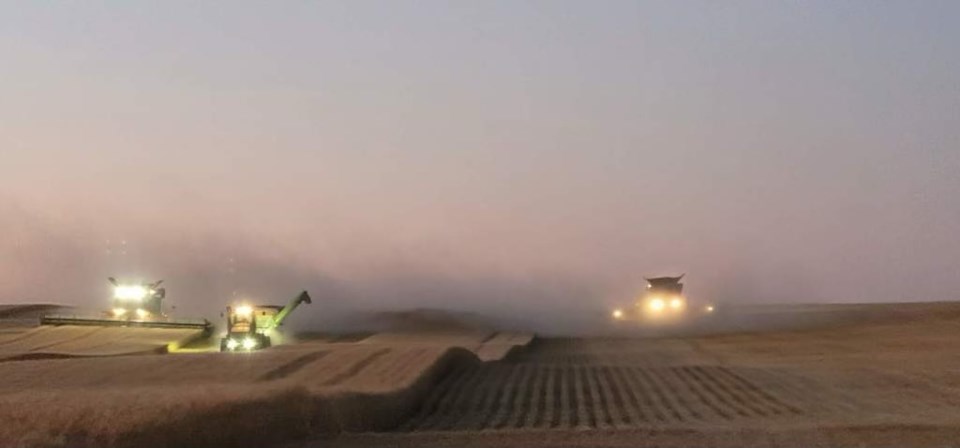ASSINIBOIA - Harvest is just about finished in the region with only flax left to be combined. With the recent frosts over the past two weeks, producers are confident the crop will be ready soon. Another week of warm dry weather has allowed harvest progress to reach 98 per cent, up from 96 per cent last week and well ahead of the five-year average of 89 per cent. Many producers are now focusing on other fall work such as post-harvest weed control, rock picking, harrowing and moving cattle.
Very little rainfall was received over the past week in the region, which has led to a further decline in topsoil moisture and water availability for livestock. The Big Beaver area received 10 mm, the Shaunavon area nine mm and the Vanguard area six mm. The region needs a large, multiple day rain event to recharge the groundwater reserves and allow for producers and their land to recover from the almost two year long drought.
Cropland topsoil moisture is rated as eleven per cent adequate, 30 per cent short and 59 per cent very short. Hay and pasture land topsoil moisture is rated as two per cent adequate, 29 per cent short and 69 per cent very short.
Water quality and availability has been a growing concern for producers. Many have been supplementing their livestock by hauling water. Producers are pulling their cattle home early due to unsafe water and almost no pasture grass left to graze. They are also drilling new wells to replace old and depleted watering sources for livestock. Water testing has continuously been conducted in the region to identify if water is unsafe for livestock consumption and these dugouts have been fenced off. Substantial amounts of precipitation will be needed over the fall and winter months to replenish the subsoil and topsoil moisture conditions for next year.
Producers are busy wrapping up harvest, harrowing, hauling bales, cleaning corrals and moving cattle to where they can be fed and watered.



